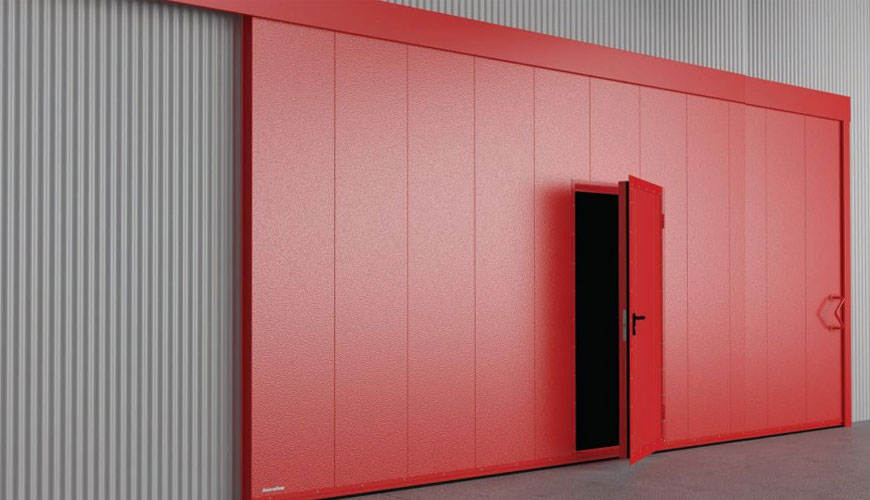

The requirements described in the CAN/ULC-S105 standard published by the Canadian Standards Council are requirements for frame assemblies for revolving fire doors. These frame assemblies have performed adequately in fire tests to warrant their use with fire doors assigned a fire protection rating of up to 104 hours when tested according to the "Standard method for fire testing of door assemblies".

This standard also contains requirements for the installation of doors and other opening guards.
A fire door frame is one of several components that make up a fire door. Other essential components are the door leaf, hinges and intumescent fire seals. Depending on the intended use of the fire door, a self-closing device, lock, latch, smoke seals, signage and door furniture may also be required.
The performance of a fire door depends on the performance of all components working together. Therefore, it is not possible to achieve fire performance by simply isolating a fire resistant component. A fire door leaf fitted to an unsuitable door frame is not a fire door because an existing door frame may not be designed to provide any fire separation performance. Certified fire door frames today carry a label that identifies the applicable fire rating.
The frame of the fire door is as necessary as the door itself to prevent the spread of fire because it plays an integral role in keeping smoke and heat in a single space within the building. The material, weight and thickness of a fire door frame depend on the required fire protection. For fire doors that guarantee to confine a fire to a particular part of the building for a minimum of 30 minutes, it is normally possible to choose between softwood and hardwood building materials. Hardwood becomes more necessary as fire protection timing requirements and wood density increase.
Among the numerous test, measurement, analysis and evaluation studies it has given for businesses in various sectors, our organization, with its trained and expert staff and advanced technological equipment, within the scope of the CAN/ULC-S105 standard, the performance required by the CAN/ULC-S104 standard is met. It also provides testing services that determine standard features for safes.
To get an appointment, to get more detailed information or to request an evaluation, you can ask us to fill in our form and reach you.